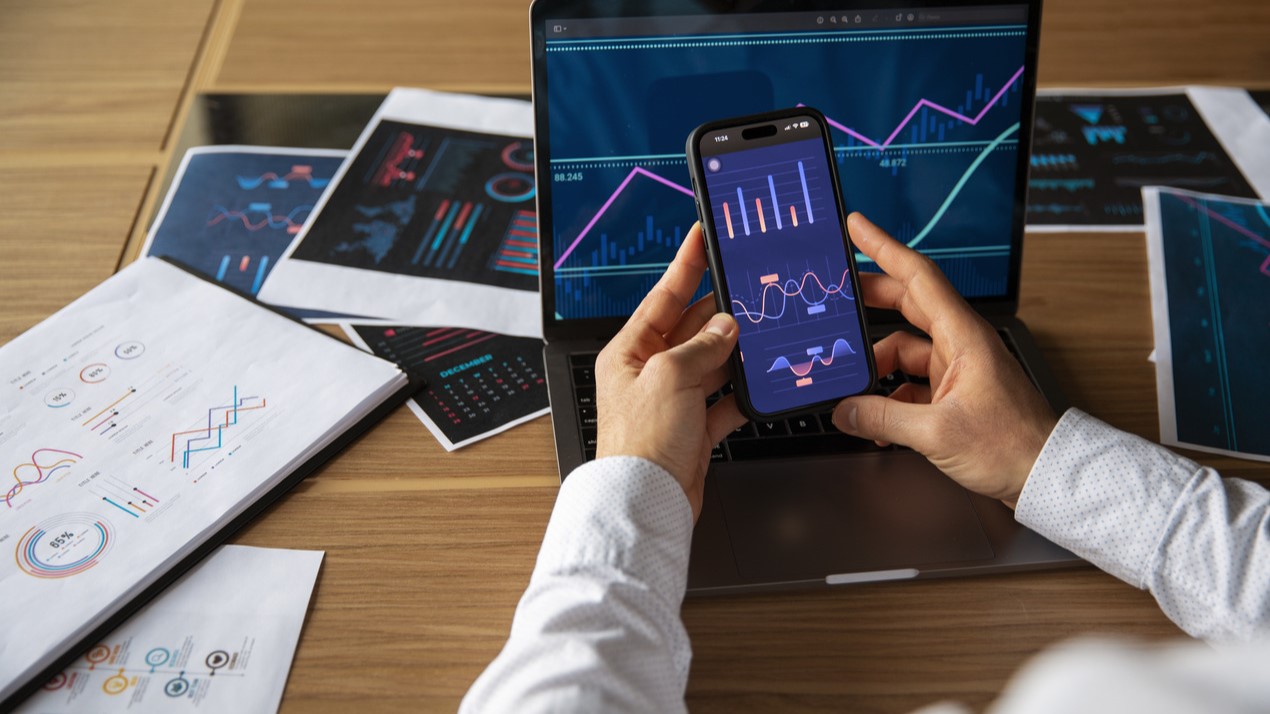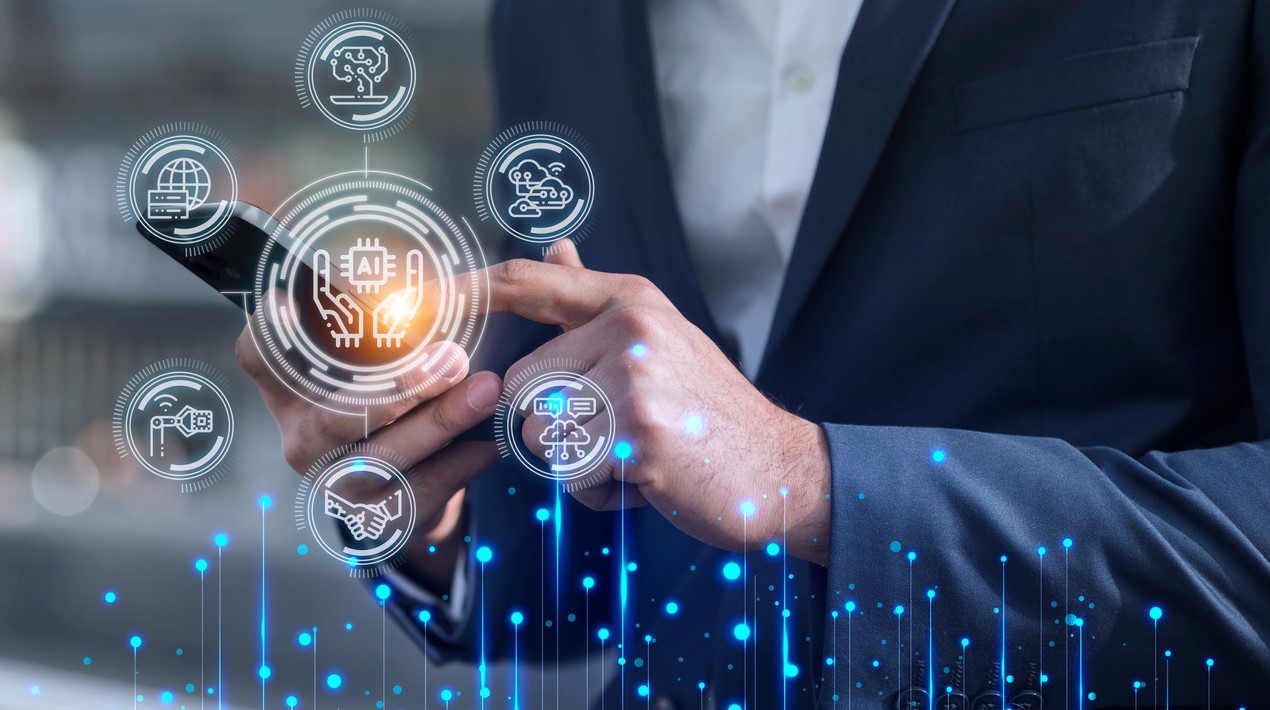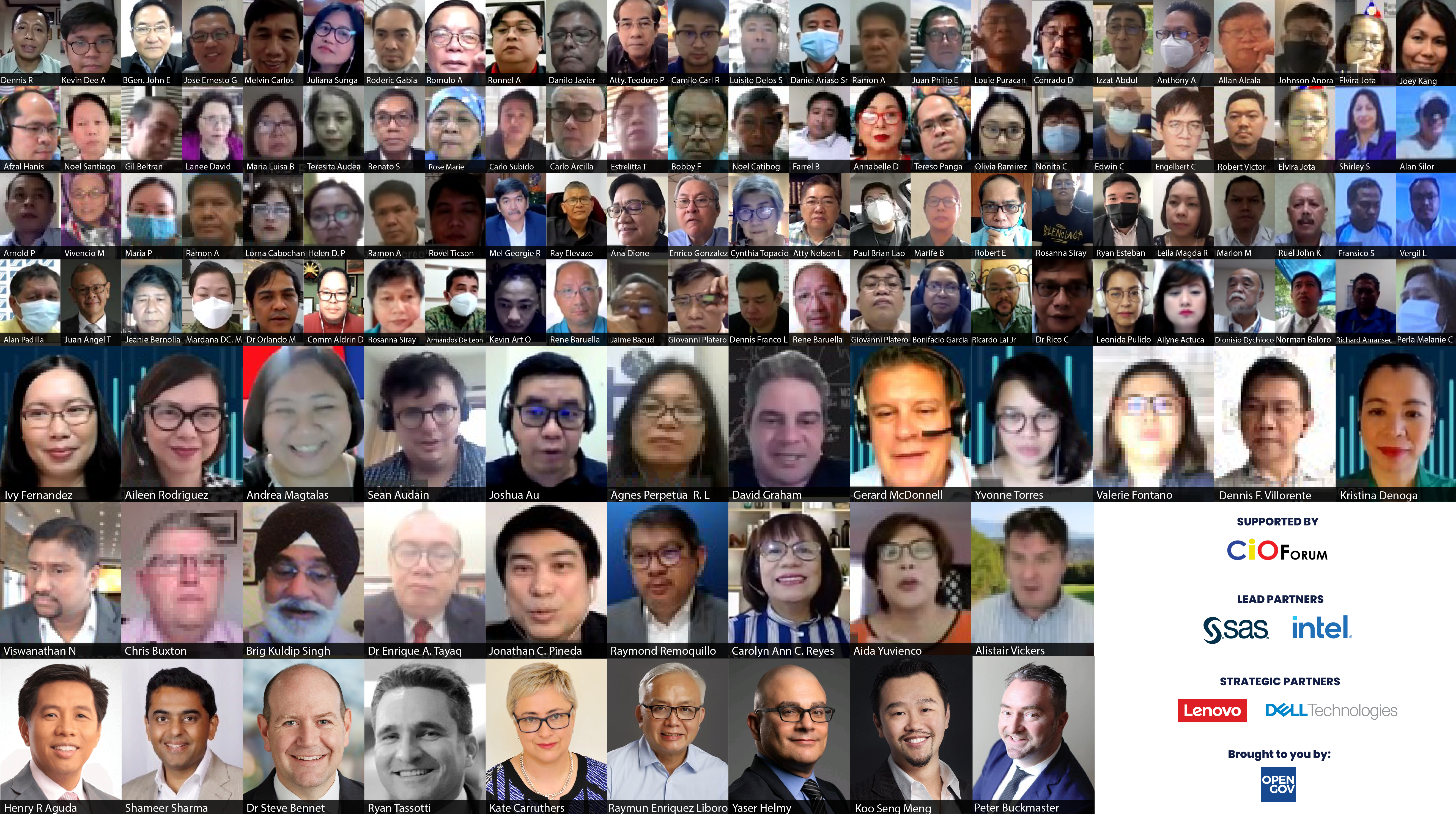
This is Part I of a two-part series. Read Part II here.
Technology today is shaping every aspect of how the world works, communicates and lives. Entering into the new norm, a new digital society is emerging, connecting everyone and everything like never before. Digitalisation and technology adoption has been increasing at a steady rate over the last few years, and the onset of the COVID-19 pandemic has only accelerated the rate of adoption.
Tech-driven innovation and disruptive technologies have been integral parts of the crisis response and mitigation efforts. The private and public sector as well as citizens now rely on digital channels to provide and access goods, services, information and entertainment.
In this increasingly VUCA world, everyone is ramping up their digital transformation efforts to better serve citizens and clients. Governments and organisations across the globe continue to find innovative and effective ways to adapt to the new normal and the post-COVID-19 environment. This was the focal point of discussions during the Philippine OpenGov Leadership Forum 2021 – Virtual Edition Day 1 that brought the key decision-makers and influencers together for a strategic level discussion on the issues that matter the most.
Convening the brightest digital minds for a strategic level discussion on the issues that matter the most, the Philippine OpenGov Leadership Forum offered a unique way of tackling challenges in its first virtual edition. Intentionally planned, every activity and facet of the event was designed to let delegates garner exclusive insights from the digital leaders as well as demonstrate their thought-leadership.
As always, the forum provided intimate interaction between key ICT leaders from the Public Sector and the Financial Services Industry who influence and determine digital strategies across agencies and organisations.
Apart from informative presentations from renowned speakers, this year’s forum continued its award-winning OpenGov Gamification Table (OGT) format in the new OpenGov Gamification Virtual Rooms (OGVRs). Every OpenGov Gamification Virtual Room was a virtual heuristic exercise allowing delegates to learn from varying decision-making scenarios just as they would in the physical world.
Cultural Shifts amid the Pandemic

To kickstart the session, Mohit Sagar, Group Managing Director and Editor-in-Chief at OpenGov Asia delivered opening remarks.
Well before the pandemic, there was consensus on the benefits of remote models – working from anywhere, anytime. The discussion was vigorous on how to bring this about effectively and securely but ultimately, it did not happen in any significant way. Then, at the end of 2019 came a 500-mile tailwind so devastating that it forced the world to pause. The virus respected no border, industry or community – ravaging all with equal ferocity.
The public and the private sectors worked independently and together to fight the pandemic, coming up with a slew of ad-hoc solutions. Digital initiatives and tech platforms were launched across sectors and industries. However, the demand on the public sector shot up dramatically as citizens, forced to stay at home, looking to the government for necessities to survive. Compounding the situation was the need to urgently manage the sick, the vulnerable and the inaccessible population.
In the early stages, people were excited at the opportunity to work from home, a cultural shift that had been in the offing for a while. Interestingly though, the step was considered a “pivot” – with the connotation of reaction rather than strategic, or some may call “band-aid technologies”. People and organisations were said to be “pivoting” to manage and mitigate the issues the pandemic brought.
Beyond a doubt, both sectors did their jobs in terms of providing relevant programmes and initiatives throughout the age of COVID-19. But the question remains, were those initiatives innovative and intentional? Was enough done with the available tech? Additionally, as the initial euphoria of remote working wears thin, people, once happy about the shift, realise that the new normal disrupts their work-life balance and their well-being.
The good brings with it the bad, the unsafe and the difficult. Deployment, in normal circumstances, of technology like AI, Cloud and Data Analytics are accompanied by cybersecurity challenges. In the pandemic where almost everything has moved online, cybercrime has increased astronomically.
Knowing this, Mohit challenged the delegates, if you put digital transformation at the heart of your plan, is everything going to be magically in place? Or do we need to look beyond the adoption of technologies to the comprehensive integration of technology, processes, and people?
Organisations and institutions must find the right balance in their digital transformation journey using technology. They must also find leadership to achieve the ultimate end goal of a complete digital transformation in the new normal.
In closing, Mohit emphasised the need for agencies and organisations to find the right partner in this digital journey. Not just from the tech sector, but also the government, banking and FSI, to ensure that everyone is on the right path to an ideal digital transformation.
The PhilSys: A Foundational Identity Platform for an Inclusive and Resilient Digital Philippines
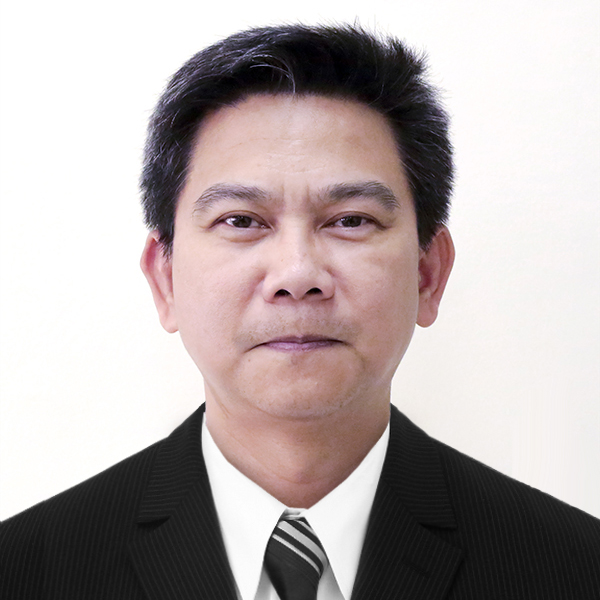
After Mohit’s opening remarks, the forum heard from Denis F. Villorente, Undersecretary for the National Information & Communications Technology Assets Index, Department of Information and Communications Technology (DICT).
Denis acknowledged that digital transformation was already happening before the pandemic – COVID-19 accelerated it. There were many initiatives in place or the pipeline.
Denis spoke about the potential of a robust national ID system that could facilitate multiple types of transactions necessary for digital ecosystems and societies, saving people, government and businesses time and money and unlock new drivers of economic value and growth.
Exploring the rationale of the Philippines’ national ID system, he conceded that there was a need for a foundational ID system. The over 25 functional ID systems do not offer digital authentication services to third parties and highly dependent on paper-based and manual processes. This has led to high costs and fraud in service delivery and prevents the shift to online services.
In terms of public services, the current identification landscape in the Philippines has not just created exclusion but also exacerbated inequality. Citizens often need to provide two or more matching physical documents which is a barrier for many to access services. About 1 in 5 of the poorest (40% ) Filipinos have been unable to apply for government services because they lacked the required IDs. Similarly, 1 in 6 of this group have been unable to receive government financial support because they lacked the required IDs.
Knowing this, the need for a foundational ID was glaringly obvious. Therefore, Republic Act No. 11055 or the Philippine Identification Act was signed into law. The law establishes a single national identification system that aims to provide valid proof of identity for Filipino citizens and resident aliens of the Philippines. The Philippine Identification System (PhilSys) is the government’s central identification platform.
The PhilSys has two functions. One is the PhilSys Number (PSN) that creates a unique digital identity for all Filipinos and resident aliens via the PSN. The other is to provide reliable authentication of that identity for secure digital transactions.
PhilSys is designed as an enabling platform that unlocks new services and systems for the digital economy, especially online transactions. It underpins sectoral IDs and databases to enhance accuracy, interoperability and integrity. The system boosts the digital transformation of existing services and systems reducing cost, time and fraud.
The PhilSys-enabled services will allow governments and businesses to use technology to change how they do business, shifting to transactions that are paperless, automated, and online.
In terms of security, as a permanent and irrevocable unique identifier, the PSN is very sensitive. If it is collected and widely used in its raw format, greater risk of it being leaked or stolen, with consequences for security and privacy. To mitigate these risks and learning from the experience of other countries, the PhilSys is adopting tokenisation as a strategy to protect the PSN from misuse while maintaining the same functionalities. Tokenisation involves the generation of PSN tokens with the power of the user that obfuscate or mask the PSN and serve the same function as the PSN.
The PhilSys aims to provide efficient and reliable authentication services by having the PSN microprinted on a PhilID card to allow holders to retrieve the number when needed. The number is used to facilitate authentication and the relationship is like that of an ATM card and bank account numbers.
A PhilSys mobile app develops an “Alyas” PSN that can be generated by the user via the app. This is like virtual credit card numbers. Data is stored in databases that generate back-end tokens unique to each relying party and can be mapped to others.
Designed with privacy in mind, access to personal data in the ID system is strictly limited by the Data Privacy Act and the PhilSys Act. The country’s National Privacy Commission (NPC) also supervises its compliance. Privacy best practices are embedded in its technical architecture, such as data minimisation and proportionality, tokenisation, and encryption. The system will also adopt security measures per the ISO 27000-family standards.
To end his presentation, Denis said that by the end of 2021, up to 70 million Filipinos will have been registered to PhilSys and been issued their PSN and PhilIDs. He emphasised that the PhilSys present opportunities for service providers to simplify, secure, and reduce the cost-of-service delivery to citizens/clients. Government CIOs have a critical role to play in ensuring the preparedness and readiness of their agencies in unlocking the opportunities and value of the system.
From Artificial to Real: AI Stories in the Fight Against COVID-19
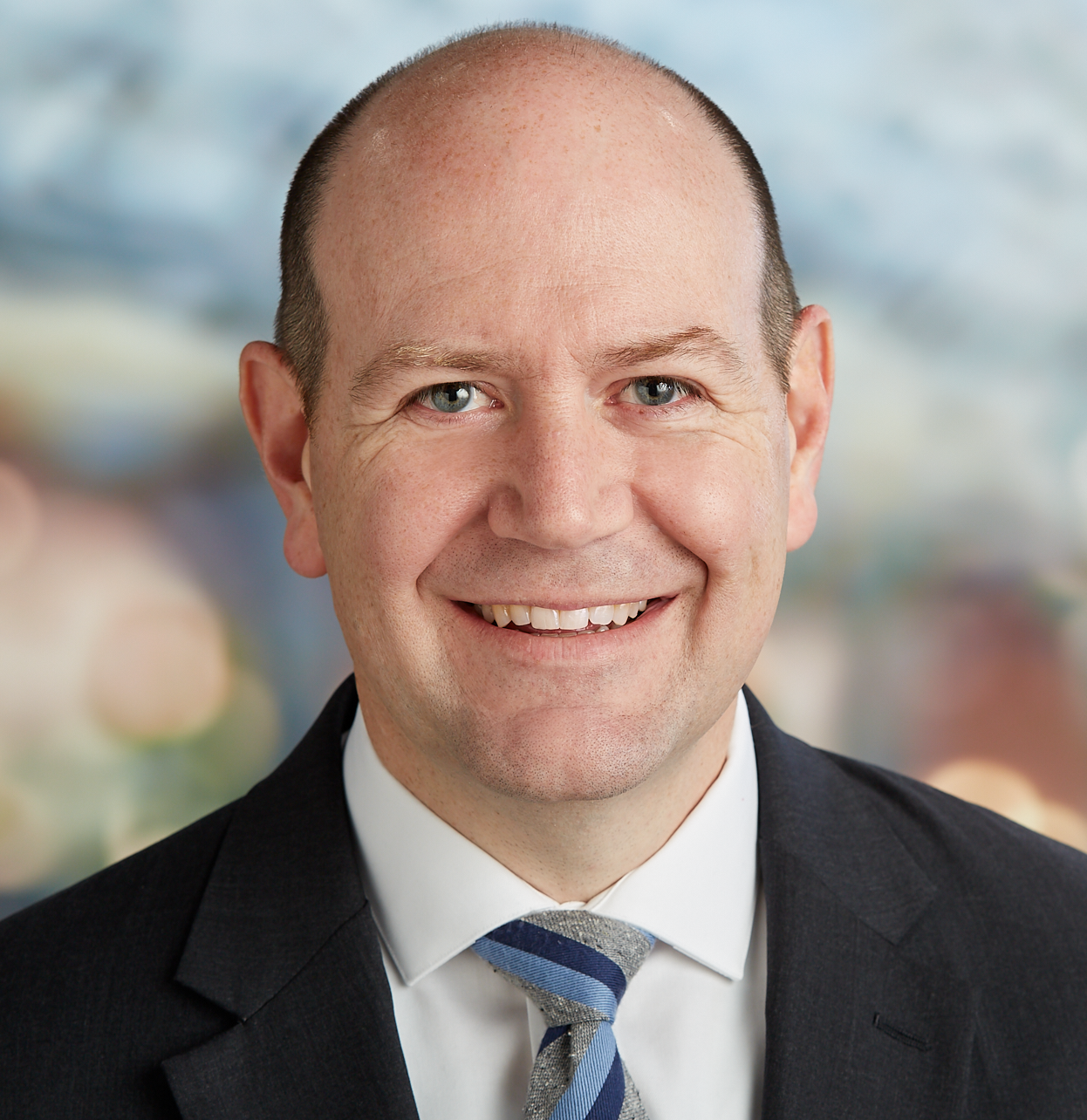
The forum moved to a presentation from Dr Steve Bennett, Director, Public Sector & Financial Services Practice, SAS. He discussed how Artificial Intelligence (AI) helped during the pandemic.
Governments initially adopted operations research, Steve explained, as a scientific method of providing executive departments with a quantitative basis for decisions regarding the operations under their control. It then evolved to AI that could provide better decisions by training systems to emulate specific human tasks through learning and automation. Technology then transformed from artificial to real in the battle against COVID-19.
First, AI and data analytics helped governments in their responses against the pandemic by Epidemiological Modelling and Medical Resource Optimisation. Governments used data analytics to flatten the infection curve while preserving limited resources crucial in the COVID-19 era. AI and data analytics also assisted governments regarding contact tracing efforts by connecting and understanding data available to help mitigate the spread of the virus. Utilising these technologies can also make outbreak predictions by knowing the areas where large communities are residing and are vulnerable to possible contagion. Governments can utilise machine learning and AI to help them make predictions and anticipate future outbreaks.
Second, AI and data analytics aided governments in the recovery phase, more specifically in delivering citizen benefits. Citing the example of the United Kingdom, Steven said the British government offered a range of benefits to people in need. like other governments, the nation, too, wanted to make sure that benefits were delivered to the right people. AI and data analytics were successfully deployed to quickly score and validate the right beneficiaries that all those resources went to.
Steve agreed that the re-imagining of government, including digital transformation, is happening all over the world and was accelerated by COVID-19. At the core of this, AI and data analytics are helping governments to determine what it means to focus on services for their citizens.
In terms of citizen centricity, Steve gave the example of a large city in Denmark. The city wants to get people back to work in 13 weeks or less if they lose their job. This vision is tailor-made for machine learning and AI to optimally match the mix of programmes to the right citizens. Knowing the background of people and by having AI/ML map appropriate programmes, the government has seen great results in terms of getting people back to work.
AI and data analytics has helped governments when it comes to producing tailored citizen services and benefits optimisation. For example, the New Zealand government noticed that people who entered the benefits programme were children or under the age of 18. They wanted to know how they could change the trajectory of children and families in New Zealand.
So, they started to use data analytics technology that the retail industry has been using for years, where companies gather and understand data that can help them identify what products are most fitted for their customers. Adopting this logic and technology to the public sector, helped them offer the best tailor-made services for their citizens, saving the government a lot of resources.
Confident that these examples about AI and data analytics would inspire delegates, Steve closed by emphasising that these technologies are not just theoretical. They can make and have made a practical difference in the lives of citizens and in government missions.
Power Talk
 The next on the programme was a Power Talk where Mohit joined panellists Agnes Perpetua R. Legaspi, Assistant Director Export Marketing Bureau, Department of Trade and Industry (DTI), Henry R. Aguda, Senior Executive Vice President, Chief Technology & Operations Officer & Chief Transformation Officer, UnionBank of the Philippines, Brigadier Kuldip Singh (retired), Sr Consultant/Specialist, National Disaster Management Authority, and Sean Audain, City Innovation Lead, Wellington City Council.
The next on the programme was a Power Talk where Mohit joined panellists Agnes Perpetua R. Legaspi, Assistant Director Export Marketing Bureau, Department of Trade and Industry (DTI), Henry R. Aguda, Senior Executive Vice President, Chief Technology & Operations Officer & Chief Transformation Officer, UnionBank of the Philippines, Brigadier Kuldip Singh (retired), Sr Consultant/Specialist, National Disaster Management Authority, and Sean Audain, City Innovation Lead, Wellington City Council.
On the agenda to discuss was public services in the new normal and what does the word “Reboot” mean. Open to debate was the kind of transformation the panellists were expecting to see and how did they think technology would support the reshaping of the world with lessons learned from COVID-19.
Agnes said that the new normal means not going back to the old norm. The working environment will continue to be hybrid; using a lot of ICT, incorporating shared value creation in governments and organisations will equate to better business processes and client services. Agnes conceded that there will always be a need to evolve and adapt to change and embrace new technologies. AI and predictive analytics, she felt, will play a vital role in the post-COVID 19 environment.
There was already a global trend of remote working, Kuldip acknowledged; COVID-19 magnified and accelerated this trend. Humans are averse to change and are creatures of habit so it is up to leaders to continue and improve this trend going forward. Along with the evolution of technologies and practices, there is a huge concern about the associated risks that are evolving alongside. For example, from robberies using guns, it has evolved to laptops and the internet. Knowing this, society needs to be more careful going forward.
Henry agreed with Agnes and Kuldip that practices during the new norm are here to stay. From a financial sector perspective, the industry can adopt a banking work from anywhere approach because banks follow their customers. If it is a work-from-home setup, they will introduce banking-from-home. The banking sector will adjust to the current norm. However, he cautioned that this transition needs to be secure enough to mitigate possible risks and threats associated with this change.
Sean said the good thing about the new normal is that it allows new things to occur. A huge proponent of biodiversity, one of the most promising things, he noted, is the decoupling of our economic growth from carbon. The world managed to do it during the COVID-19 era supported by disruptive technologies. Sean hopes that the speed of change complements these purposes.
IoT – The Smart City Technology
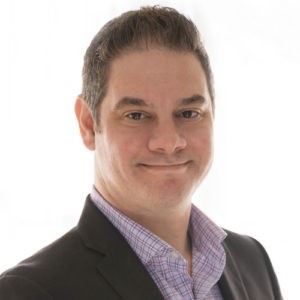
After the engaging Power Talk section, the forum heard from David Graham, Chief Innovation Officer, City of Carlsbad on how the Internet of Things boosted smart city technology in the city of Carlsbad.
The concept of smart cities has been around for a long time, David agreed and the pandemic further magnified the ideas around it. Governments found work virtually, deliver citizen services via tech and deploy a slew of online tools. Countries also saw drastic adjustments needed to address climate change and similar issues. All in all, the pandemic accelerated and promoted change.
With innovation ramping up during the crisis, it impacted residents, visitors, business and governments. There was a need for rapid adaptation of new technologies to get work done as the way work got done changed. New ways to engage with the public were discovered that can move from temporary to long-term. Insights that contribute to continuous improvement and advanced data-driven decision making have been obtained. To summarise, innovation principles to get the job done were learned.
There were several ways the city of Carlsbad adapted to the new normal. First is they adopted a new city app, Carlsbad Connects, an easy way for citizens to report things that attention around town – like potholes, sidewalk cracks, traffic light outages, graffiti or code enforcement issues.
The city replaced landlines with Voiceover IP increasing capabilities and flexibility. They conducted virtual inspections and upgraded cybersecurity. A Business Centre for online payments was established.
The city council continued its analysis of the effects of the pandemic by issuing an updated survey of Carlsbad businesses during COVID-19, data collection and analysis of changing business needs and financial assistance that needs re-assessment. The council provided rapid lifelines to local businesses like a COVID-19 restaurant map that connects residents with safe dining locations, information on food delivery/takeout options, that are accessible on a phone, tablet or computer.
They had initiatives to address COVID-19 hot spots which cater to the calls for services related to 19 health order violations, identification of focus areas for increased outreach or education, and track and monitor changes in patterns in districts.
Some of Carlsbad’s city-wide initiatives include operations and performance monitoring, community risk reduction, pre-planning, after-action mission analysis, hazard reduction, predictive analytics and proactive interdiction.
The city adopted a Drone Programme for city-wide operations that could highlight possible emergencies within the community beyond the physical line of sight. It also uses these drones for package and service deliveries.
David believes that strategic digital transformation must include an equally strategic digital transformation investment programme. Governments should approach investment in digital infrastructure the same way they see investments in physical infrastructures. A capital improvement strategy for technology and digital should be a five-year plan with project descriptions, timelines, cost and funding sources.
Governments must make consistent investments crucial to adapting to emergencies and crises, David concluded. They must evaluate residents, businesses, visitors and staff experiences to reduce friction on future continuous improvement efforts. Leaders must let the crucible of crisis accelerate change management while making temporary responses a long-term improvement. People must not focus on the phrase “back to normal” but must instead create a “better normal” to achieve that future.
Increase Your Agility with Multi-Cloud Flexibility

The forum welcomed Ryan Tassotti, Enterprise Architect and Principal Engineer, Dell Technologies to share how governments and organisations can utilise the flexibility of a multi-cloud system to increase their agility.
Ryan defines the cloud as an on-demand self-service that has broad network access, resource pooling capability, rapid elasticity and can measure services. The cloud has four deployment models – private cloud, community cloud, public cloud and hybrid cloud. The Top 3 objectives driving cloud spending for Asia Pacific’s customers are New technology, Digital Transformation and Cloud-First Strategy.
Ryan explained that the Philippine Cloud Policy is up to date in terms of digital innovations and services, aiming to improve citizen’s experience with the government. It is data-centric and classification level is important. He was firm in his opinion that no Philippine government created data should be subject to foreign laws, regardless of the cloud deployment model.
The fact is, Ryan noted, that the pandemic ushered the world into a new era. The new normal brings new demands and the cloud is set to provide solutions to these new necessities. The world has made a paradigm shift and digital transformation must accelerate with it. Close to three-quarters (74%) of all organisations are investing in on-demand digital services, two-thirds (65%) of global GDP will be from digital by 2022 and on-demand models by 2023 will be 15%, up from less than 1% in 2019.
A recent survey of 900 IT leaders across verticals and regions found that 96% of organisations have an executive mandate to leverage cloud technologies. While 89% plan to deploy private cloud infrastructure in the next 12 months, 76% of organisations will leverage multiple clouds environments over the next two years.
Utilising a multi-cloud strategy caters to different workloads. Some organisations value performance, some prioritise data services, while some look at costs and data sovereignty. While hybrid-cloud seems to be the way forward, a hybrid-cloud platform must bring stability. It must stabilise workloads, apps, and data spread across multiple clouds – all in all, a consistent cloud experience for everything.
Ryan advised organisations to find partners in cloud adoption. “There are experts who can help you migrate without pain – why do it alone?”
Cloud adopters must ensure that the platform is consistent throughout. They must avoid hiccups throughout an application’s lifecycle with platforms that extend seamlessly, End-users do not want to be surprised by a new management interface so they must be informed.
Ryan and his team in Dell Technologies promote consistency. They facilitate consulting services, deployment services that accelerate technology adoption, managed services realising digital transformation value for client systems, storage, backup, and converged infrastructure, and education services that develop and retain valuable IT talent through continuous learning.
Ryan is firmly convinced that the future is hybrid, the future is multi-cloud, and the Philippine Cloud Policy embraces these advancements.
New Zealand’s Integrated Data Infrastructure – Strategies, Implementation, Successes, Challenges and Road Ahead
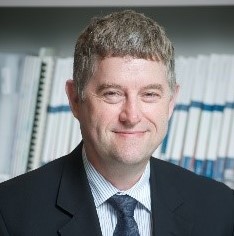
Next, delegates heard a presentation from Chris Buxton, Chief Digital Officer, Statistics New Zealand on the strategies and challenges behind the implementation of New Zealand’s integrated data infrastructure.
Chris shared that New Zealand’s integrated data infrastructure has two parts. One is the Integrated Data Infrastructure (IDI), an integrated database containing de-identified longitudinal microdata about people and households. The other is the Longitudinal Business Database (LBD), an integrated database containing de-identified longitudinal microdata about businesses. Linking these datasets together is called the Spine, created by linking births, tax, and visa data together, other sources (aka nodes) are linked with the spine.
The flow of data in the IDI and LBD is by collecting data from all sources, processing and linking the data, and identifying data available for research. The data is kept safe within a ‘five safes’ framework to ensure that access to the IDI and LBD is only provided if all the following conditions can be met:
- safe people (background checks on citizens)
- safe projects (inspections on infrastructures)
- safe settings (adept data storage systems)
- safe data (anonymising the data)
- safe output (nobody can take out data from the system)
Researchers from government agencies, universities, the private sector use the information derived from these data to study studying issues like child vulnerability, education and employment outcomes, the impact of health conditions and business productivity.
Researchers use anonymous data from IDI and present it in a comprehensible way, allowing users to visualise integrated government data at a detailed geographical level. The information also influences employment pathways and outcomes by letting researchers know how the workforce is changing over time.
However, while there are benefits, there are also limitations. Researchers can tackle previously ‘unanswerable’ questions via longitudinal view, cross-sector view, and geographical views all while reducing research cost and burden. But various administrative data quality issues are also present and these processes demand high time and skill investments.
Chris also shed light on the new Datahub. The hub is a centralised data management platform that stores, verifies and analyses data. Based on the Cloudera technology stack, it feeds data into new and existing statistical and analytic systems such as the R and Python programming languages and tools such as SAS and Microsoft’s Power BI. Errors in data are detected early through automated validation and checking systems that also extract relevant metadata and prepare the data for use. With no restrictions on how data is formatted, the Datahub provides increased flexibility around how data is stored and used.
Chris shared lessons and enabling factors from the implementation of the IDI and LBD. They found the “If you build it, they will come” phrase to be true. He explained that when leaders decide to build a system dedicated to data, then the information needed from that data will come. He also added that data providers are generally willing to make their data available. However, they found that technical skills are a barrier to extracting true value from data. For systems to succeed, there must a be social licence, informed trust and flexibility is key.
At the end of his presentation, Chris advised governments and organisations to improve their infrastructures, improve access to these services, make legislation reviews, and create international access to create improved awareness.
Blazing the Trail in AI Talent Development
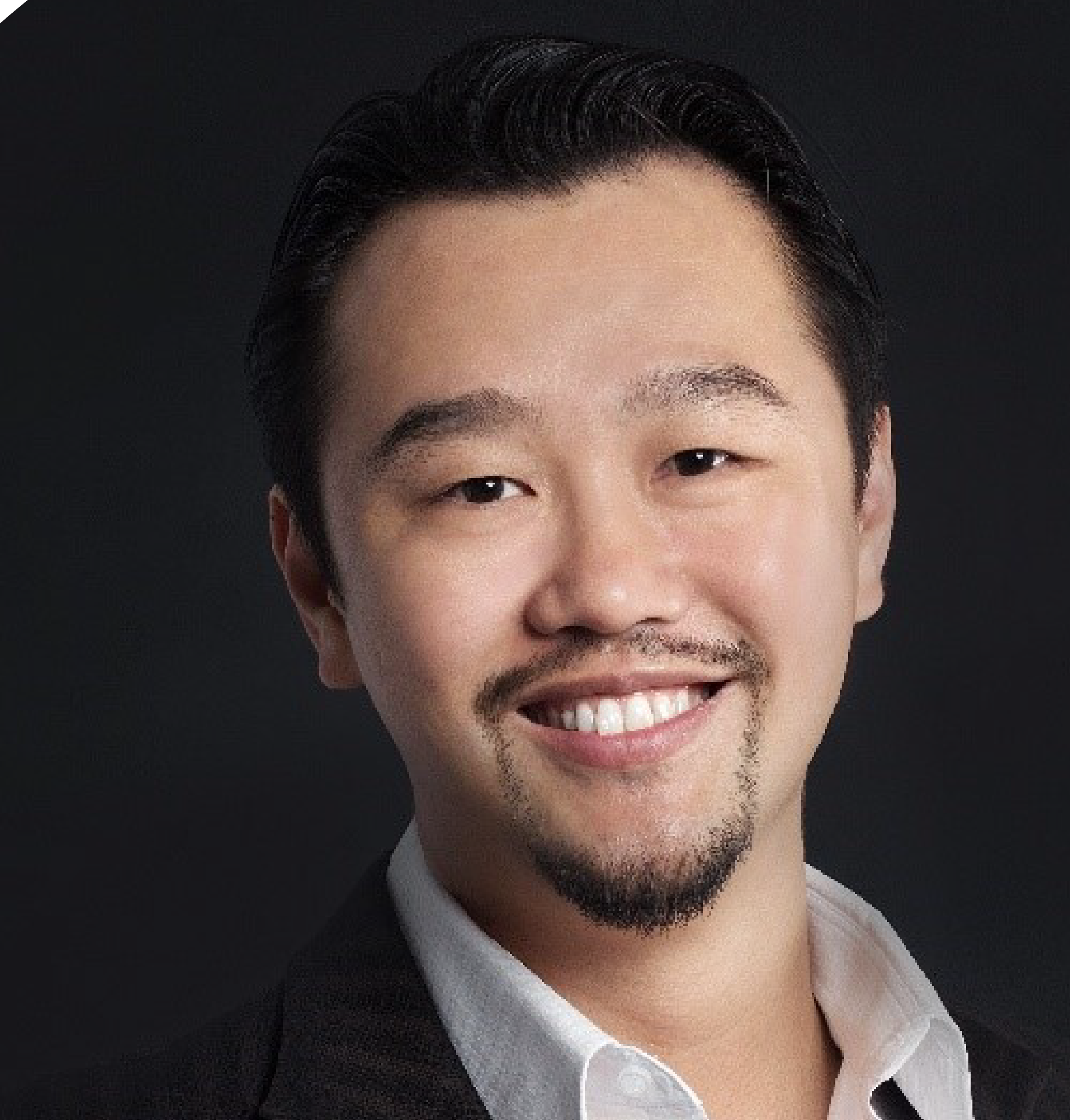
Koo Seng Meng, Senior Deputy Director – AI Innovation, AI Singapore was next to discuss how AI Singapore blazed the trail in AI talent and literacy development in Singapore.
Seng Meng started by confirming that AI Singapore’s National programme intends to educate all nationalities, not just Singaporeans, on AI and to harness the scientific and economic potentials of AI for Singapore. They work closely with the government’s lead ministries and economic agencies as well as the private sector’s research institutions and enterprises to build local AI talents.
By staying true to their mission called “Grow our own timber”, Seng Meng said that Singapore must develop their people to meet the national demands on AI. For example, at a primary level, AI Singapore launched AI for Kids (AI4K). On the secondary level, they let schools adopt AI for Everyone (AI4E) as an AI foundation baseline. There is also AI for Students (AI4S) dedicated to young learners. In an industry setup, there is AI for Industry (AI4I) where universities use the course with academic credits, pushing them to an AI Apprenticeship Programme (AIAP).
AI Singapore have done these talent programmes for 3 years, but the question is, is it enough?
Seng Meng believes that there should e an increase in the supply of AI Engineers, not students to go into the workforce. The nation must grow an AI–literate population to grow an Ai-trained workforce to increase the number of AI capable individuals.
This can be achieved by understanding AI basics presented in AI for Everyone, AI for Students, and AI for Kids. AI skills can grow with AI for Industry and co-developed AI curriculum with schools and institutes of higher learning. By growing the AI-capable workforce, the country gets a chance to work on real-world AI such as the AIAP.
AI Singapore and the AI Professionals Association (AIP) have set a competency standard and career pathway for AI learners and aspirants. They also qualify AI Engineer talents that industries need, and through this partnership, they create a national registry of qualified AI engineers for national policymakers.
The AIP is the foremost professional society for practitioners, organisations, and students in AI. The association also started the Chartered AI Engineer profession. They intend to help companies and countries by giving them a national standard for professionally qualified AI engineering talents.
The Chartered AI Engineer profession is broken down into three categories. First is the Associate AI Engineer; they are students or working professionals who have the necessary skills & knowledge to start working on an AI Project. They are not required to display the relevance of their technical skills to business. Rather they are deemed to be proficient in the required technical skills to start working for a business organisation that has some data capabilities.
The second one is the Chartered AI Engineer Level 1; working professionals who have the necessary technical skills to develop AI solutions. They can draw a relationship between an AI project and its relevance to business and design the solution to meet the deliverables, and lastly is the Chartered AI Engineer Level 2; they are working professionals who are team leads for AI engineers. They align project outcomes to fit into the business process and able to set up the appropriate process to monitor the effectiveness of the AI models put into production. They also lead or involve in the final solution architecture to ensure successful deployment that delivers business value.
To end, Seng Meng advised governments and organisations to have an AI Readiness Index (AIRI), that tackles an organisation’s readiness with AI talent, literacy, governance and management support, as well as data readiness that ensures the quality of data, and infrastructure readiness with a data warehouse and computing resources.
The Democratisation of Data & Insights

Taking over the session was Kate Carruthers, Chief Data and Insights Officer, University of New South Wales who spoke on how the democratisation of data can help governments and organisations in their digital transformation journeys.
Data democratisation is the process of transforming data into information and making the information accessible organisation-wide. Data, and the universal access to it, is the key to fully transform organisations, Kate opines. Democratised data will create new opportunities and unlock the value embedded within organisations.
A study says that most organisations are not data-driven and will not be anytime soon. The business adoption of Big Data and AI initiatives must be viewed through a long-term lens – as a process and a journey. Only 31.0% of companies say they are data-driven. The research says that the world is headed in the wrong direction as this number has declined from 37.1% in 2017 and 32.4% in 2018.
Firms need to adopt a long-term approach, focusing on the complex cultural challenges as a starting point. Beyond a doubt, complexity is a defining feature of the digital era but governance structures to manage are not being adjusted accordingly.
Kate proposed several key pillars for data: data governance, data security (including cybersecurity, information security), data platforms and data culture.
Data Governance (DataGov) underpins everything ad is defined as the organisation and implementation of policies, procedures, structure, roles, and responsibilities which outline and enforce rules of engagement, decision rights and accountabilities for the effective management of information assets. It helps by identifying data at risk, locating sensitive data, ensuring that sensitive data is stored and managed properly, identifying sensitive data users, and ensuring consistent data access processes and safer access to sensitive data.
DataGov, privacy, risk, ethics and IT must all be aligned regarding information literacy. This will include uniformity in policies and standards, establishing decision rights, information quality, stewardship, privacy, compliance, security, assess risk and define controls as well as architecture, integration, and consistent data definitions.
There are five essential aspects to data management:
- privacy
- cyber and information security
- risk management
- ethics
- data and information governance
A good data strategy must be focused on people, technologies and processes. It is critical to understand how data generates value. This does not mean merely financial value; it means value to people and insights that are not otherwise available. Organisations should also know what their critical data assets are with data– and system– classification. Finally, an organisation must know its data ecosystem.
The principles of a successful data strategy include knowing how data generates value, knowing critical data assets and data ecosystems, and ways on how to govern the said data. Data ecosystems must have data capabilities that are about people who create and manage usable, high-quality enterprise information assets.
Capabilities should include tools, data, and processes for management reporting and advanced analytics, as well as action capabilities that automate the provision of data and enable business intelligence and insights to be delivered.
A good data management model must include security architecture, an automated user management system and data pipelines, regular penetration testing, and agile DevOps. Kate said that the democratisation of data also helps in the introduction of self-help dashboards for the following areas:
- Student Admissions & Recruitment
- Student Load Reporting
- Faculty Student Reporting
- Academic Administration
- HR & Recruitment
To end her presentation, Kate said that we must methodically focus on delivering value to people by doing something better today than yesterday. Agility and developmental operations matter and data democratisation is a team sport. Data needs a platform armed with data governance that is aligned with the issues on risk, ethics, privacy, and IT to work collaboratively.
In conclusion, she said, data is a journey, not a destination.
Read Part II of The Philippine OpenGov Leadership Forum Virtual Edition: “Embracing Digitalisation to Navigate the New Normal”.




